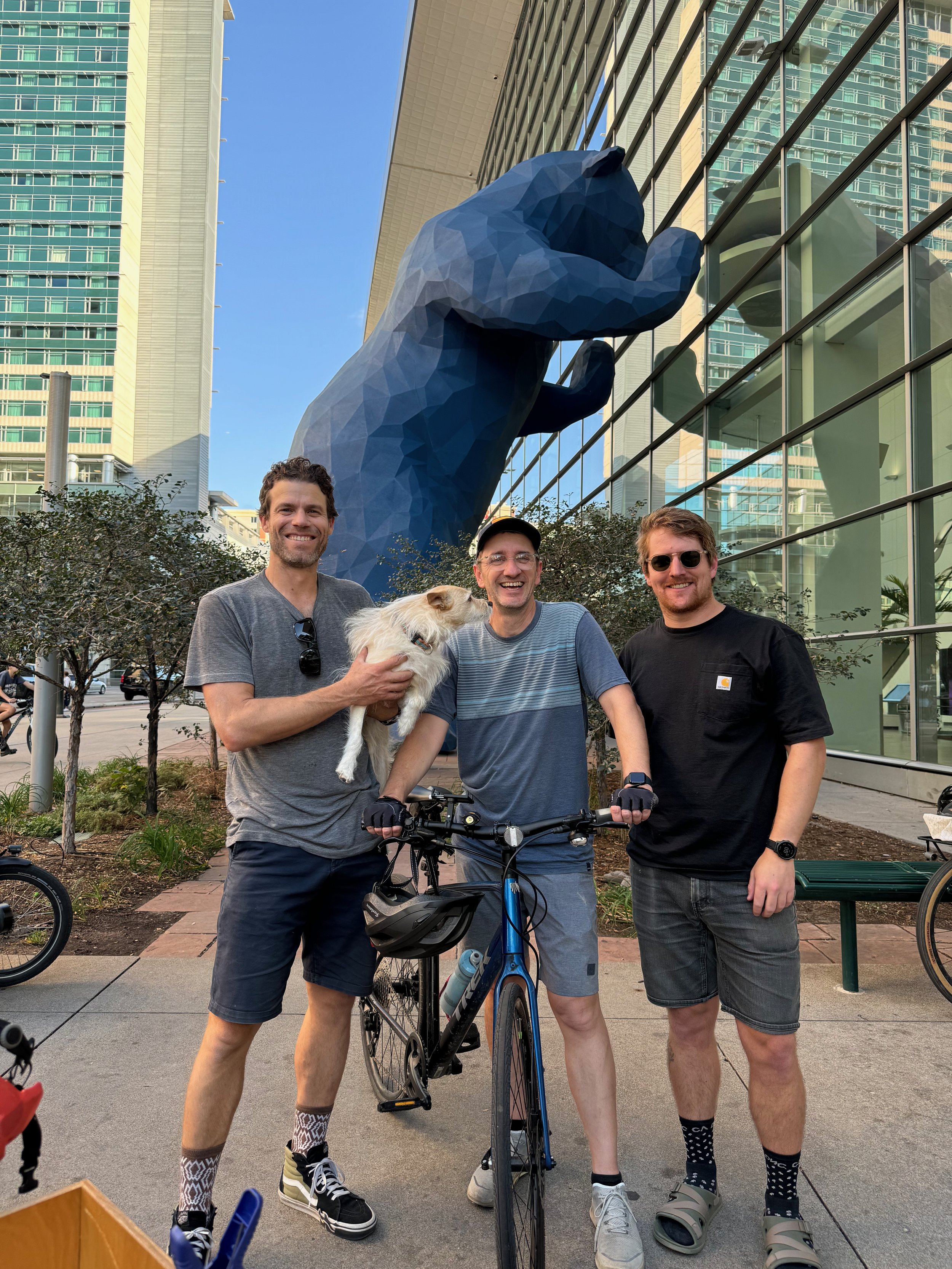About Bike Streets
Anyone should be able to ride a bike to any destination in Denver. Today. Not in 2050.
Our Mission: 100,000 people in Denver from all backgrounds riding bikes every day.
Bicycling for transportation has been described as a “miracle pill.” Individual health improves, local economies flourish, and air quality improves. Replacing car trips with bike trips is an incredibly efficient way to improve quality of life. (In Denver alone, we estimate that there are more than 500,000 bikes in people’s garages, waiting to be ridden.) And yet cities and towns lack the tools to get people on bikes en masse quickly enough to make a difference in the battle against climate change. At Bike Streets, we make it our job to accelerate the transition to post-carbon mobility.
The Bike Streets Core Team
Our team, Avi Stopper, Jason Keglovitz, and Matt Robinson have ridden everywhere in Denver, led dozens of slow-rollin’ group rides, and built software for decades.
“Bike Streets”
The name reflects our ambition that someday soon, cities across the world will have complete networks of streets populated by rivers of happy, healthy bicyclists from all backgrounds. These avenues of flowing bicycle activity will fuel local economic growth (people who ride bikes find it easier to hop off and patronize local businesses), create virtuous circles (whereby bicycling as a normalized behavior begets even more riders), and help create a more symbiotic relationship between humans and the natural world. Let’s create this future together.
Origins
Bike Streets has worked since 2018 to find ways to get more people to swap car trips for bike trips.
The Bike Streets Mapping Project, our first initiative, produced a crowdsourced map of more than 400 miles of low-stress neighborhood streets and trails in Denver, Colorado.
Our team meets with community members to evalute proposed routes.
The map has been used online more than a million times.
We ran a successful Kickstarter to print and give away 20,000 free copies of the low-stress Denver bike map.
We published our first mobile applications before the pandemic as an open-source project.
In the municipal election cycle of 2023, we launched VAMOS, a step-by-step plan for how Denver can have the best bike network for all in less than a year and for a fraction of the cost of traditional infrastructure.
In 2024, we launched Bike Streets for iPhone to get more people of all ages, abilities, and backgrounds on bikes using the Low-Stress Denver Bike Map.
And in 2025, we launched Bike Streets for Android and Bike Streets Destinations to elevate local businesses and highlight the many amazing places people can ride in Denver.




